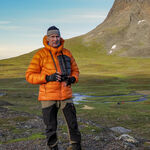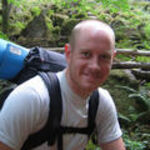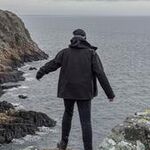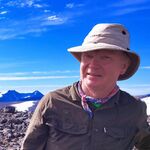Reality Case Report
(Webteam: Dispatch 8 is in 3 parts. Tomorrow we will post Part 3 of 3)
Detta ar ett extrakt ur Don Bowies dispatch fran varan G4 expedition i sommras. Jag var inte med nar detta hande. Jag var pa vag hem i Helikopter efter att ha trillat ner i en spricka. Jag kan tillagga att vi var med om en liknande incident med en Tysk klattrare som var klient pa en guide tur pa G2.
At 2am on July 10th I called home on the sat phone for another weather forecast; it appeared that the high winds would be lower on July 11th, and after a discussion with the guys we decided to wait it out a day at the 7300 meter camp. Bruce seemed OK and slept most of the day, even sharing on the brewing-up duties later that morning despite still feeling bad. But by early evening he began to struggle to stay awake, and every time he fell asleep he would periodically breathe deeply. (This means he would take 4 or 5 snoring, shallow breaths, then, stop breathing altogether for 20-30 seconds.)
By late evening Bruce began to vomit again. I again checked his vitals a few times and used the pulse oximeter I had in my first aid kit to monitor his oxygen saturation (sats). Bruce's first O2 sat measurements were low, and, soon began to drop even more. He then became extremely drowsy and could not stay awake. My own sats were hovering around the high 70's and low 80's - which was actually quite good for me at 7300 meters - at least we had that as a baseline.
Soon Bruce's O2 sats dipped into the high 40's and I began to really worry - and to add insult to injury, the snow and winds outside had picked up significantly.
The question that evening was: should we wait out the storm or begin descent in the night? That morning I had already started Bruce on various high altitude medicines and anti-nausea drugs, but they seemed to have little effect. (Although I knew that the dexamethasone was helping.) Bruce struggled to remain conscious throughout the evening and by the night of the 10th he was drifting in and out of consciousness, barely able to perform even the simplest tasks. His snoring and gasping for breathe was very loud, and the gaps between his periodic breathing grew longer. I stayed awake all night, stirring him every half hour or so, taking his sats and continuing to feed him appropriate medicines. Outside the winds were howling and visibility had dropped to zero. The last O2 sat measurement I took in the night for Bruce was a staggeringly low 37% - meaning he was functioning (somehow) on 37% oxygen.
At this point I congratulated him for officially breaking the Guinness World Record for having the lowest oxygen sats and still being alive. He didn't laugh.
At 2am I roused Bruce enough to help him to get dressed - which was a slow and laborious process in the icy, cold tent. Outside Guy and Billy fought extreme cold and wind and packed up camp, but it was too cold and they retreated back to the tents for a few hours. At 7am we finally decided to fight the storm and forced Bruce from the tent. He immediately vomited. Guy put on Bruce's crampons while I got out my GPS - and then noticed that I had insufficient satellite coverage for it to even work. Despite zero visibility and no functioning GPS, we finally wandered off our ledge and into a complete whiteout. We had no choice.
As we walked down the cwm the mist and blowing snow would sometimes lift for a moment. And once I caught a glimpse of the rocks at the base of GIV east face at the edge of the cwm, I then used the compass on my GPS and set a bearing for the rocks. Bruce was doing surprisingly well at this point despite staggering behind on the rope and falling to the snow frequently. Believe me when I say this: Bruce Normand is one strong man!!
After an hour or so - and by the grace of God - I noticed a few meters in front of me a bamboo wand stuck in the snow - the ONLY wand we had placed in the entire cwm. Somehow we were on track. After another rest for Bruce at the wand, I began to see faint footprints in the windblown snow. I followed the footprints and in a few hours we were at the top of the chute and somehow at the edge of the cwm.
Billy descended first over the edge to set up the first of many rappels. We had only lost 300 meters in elevation, but it had a noticeable affect on Bruce - who was still very lethargic and vomiting but managing along. I "fireman belayed" Bruce the first of the rappels, but despite his continued vomiting and swaying he was able to manage each pitch on his own, yet still collapsing at every stance. Soon we had rappelled to the bottom of the chute and to the start of the mixed traverse. The long 50 degree snow and ice traverse down to Camp 2 looked VERY loaded with snow, so we had one option left: descend the extremely dangerous center of the icefall....
http://www.calpinist.com









